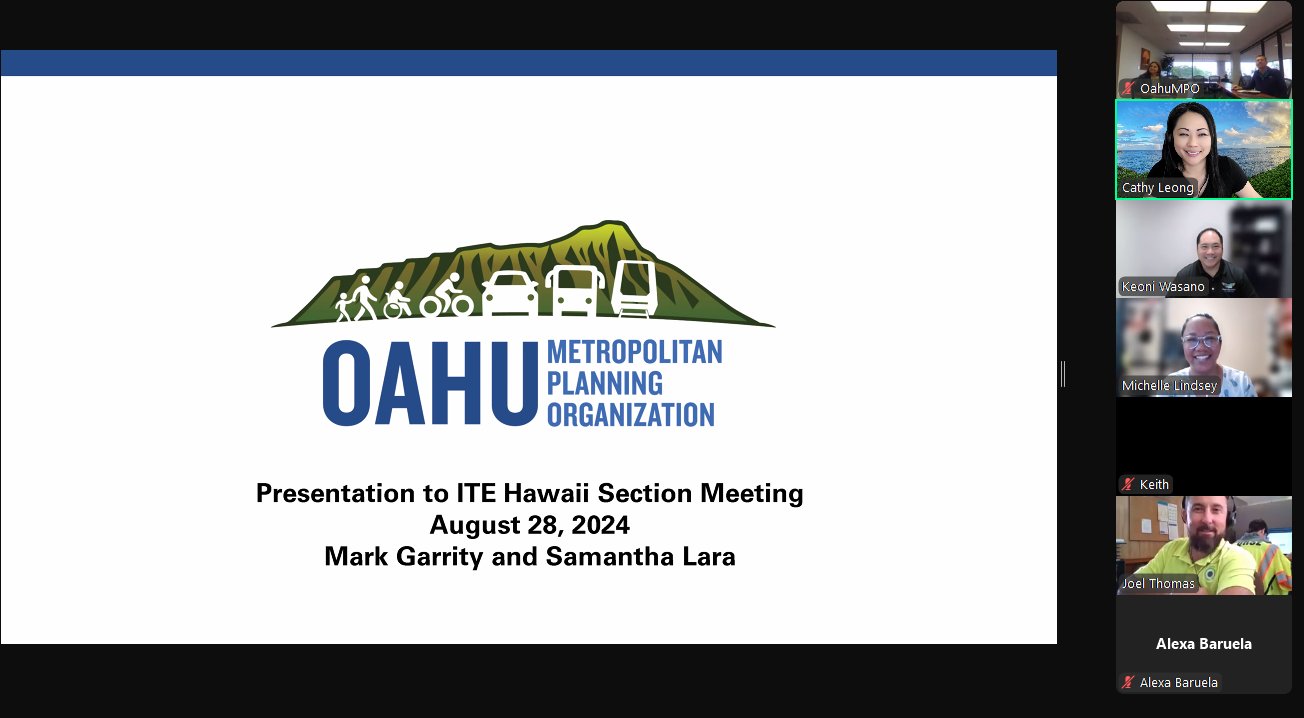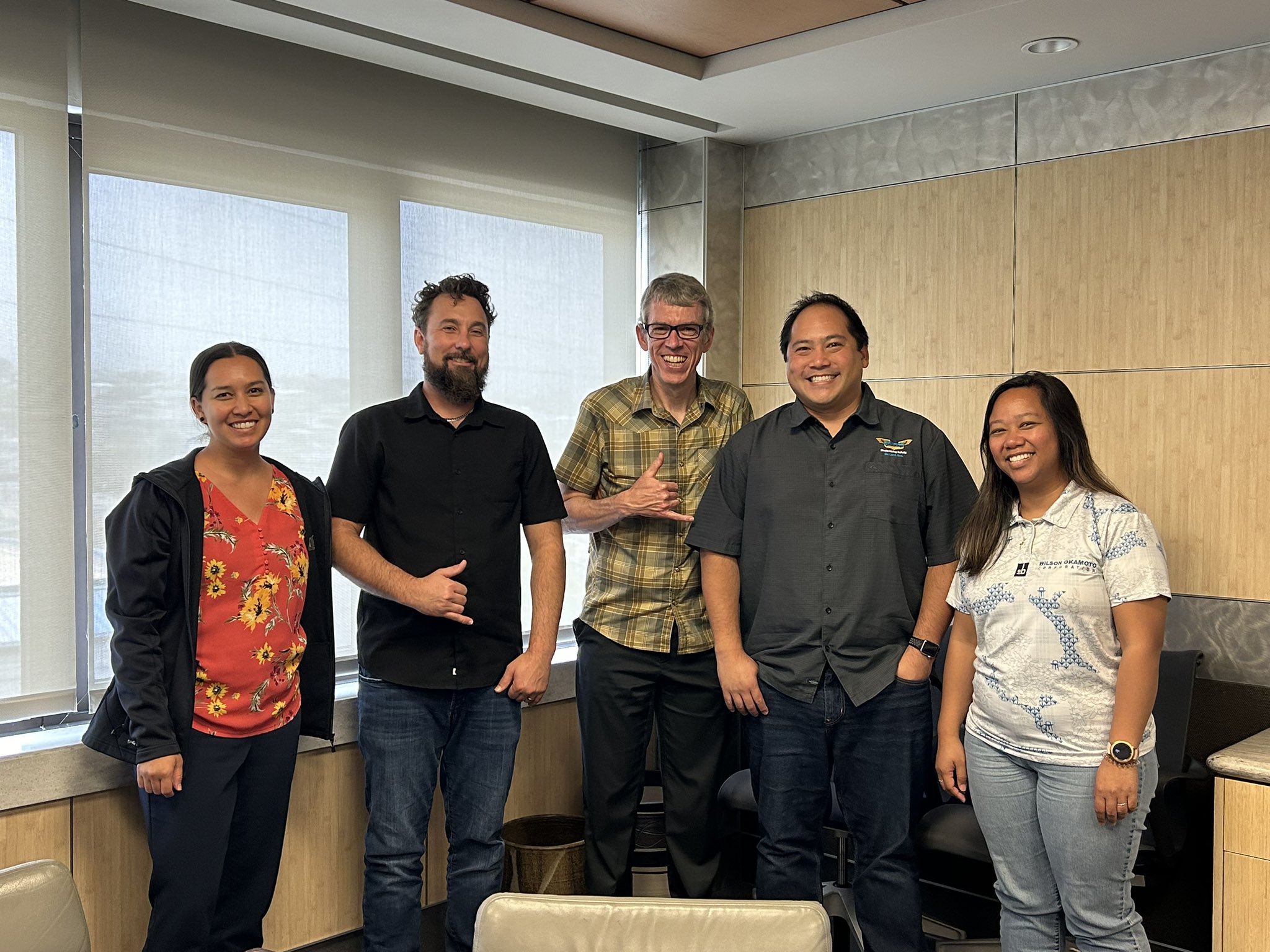November, 1996
Mr. Abe Wong, Director, and Mr. Ray McCormick, Assistant Director of the Hawaii Division of the Federal Highway Administration presented the structure, programs, and direction of the agency at the November 13 luncheon. There is an increased emphasis on intermodalism, intelligent transportation systems and attention to stakeholders as enunciated by the Intermodal Surface Transportation Efficiency Act of 1991. The Act is up for reauthorization in 1997. “Tune, not toss,” is what Mr. Wong predicted to be the fate of ISTEA.
——————————————————————————–
September, 1996
A luncheon meeting was held on Tuesday, September 10, 1996 at the Nuuanu YMCA in Honolulu.
President Julian Ng announced that Mr. Robert Miyasaki will serve as our representative on the Citizen Advisory Committee (CAC) of the Oahu Metropolitan Planning Organization.
Ms. Ann Luong Cadavona will represent ITE on the Hawaii Council of Engineering Societies (HCES) which publishes the Wiliki o Hawaii. Members not receiving this publication should call Ann at 587-2015.
Mr. Hugh Ono, Chief of Highways Division, Hawaii DOT, was the featured speaker. He discussed the current directions of the Division and the status of major projects. Mr. Ono stated that DOT is emphasizing customer service and quality, and early planning of projects included in the long range plan.
He was pleased with the success and the public’s reaction to short closures of H-1 (at night) and Likelike Highway (on a Sunday) to expedite maintenance activities.
Other items discussed included the following:
- The H-3 project is on schedule for completion in May 1997.
- An HOV lane employing movable barriers is expected to be opened to buses and carpools carrying 3 or more passengers in 1997.
- Austin Tsutsumi and HNTB have been selected as consultants in the area of Intelligent Transportation Systems (ITS).
- Finally, as a member of the national committee on the engineering license examination, he asked for volunteers to help prepare problems in the areas of traffic operations and analysis.
——————————————————————————–
June, 1996
New Officers
Past Directors Robert Miyasaki and C. S. Papacostas announced the results of the elections for next year’s officers. Congratulations to:
President Julian Ng, Julian Ng, Inc.
Vice President Wayne Y. Yoshioka, Parsons Brinckerhoff.
Secretary Susan Uejo, Austin Tsutsumi Associates.
Treasurer Ann Luong Cadavona, Oahu Metropolitan Planning Organization
Modern Roundabouts
Mr. Peter Doctors, Ourston & Doctors, Santa Barbara, Ca discussed the topic of Modern Roundabouts. According to Mr. Doctors, the modern roundabout is a form of intersection that provides both high capacity and safety, while not requiring traffic signals. The modern roundabout is similar to America’s old traffic circles, but its geometry and traffic regulation are considerably different. Modern roundabouts have been used for four decades in the United Kingdom and more recently in other countries. A dozen or so modern roundabouts have been built in the United States in the last six years and many more are planned for construction.
He suggested that Hawaii is an appropriate place to introduce this technology: Because roundabouts provide high capacity where it is needed, at the intersection, they will in many cases reduce traffic congestion without widening between intersections, thus protecting Hawaii’s natural roadside beauty while enhancing intersection beauty as well.
——————————————————————————–
May, 1996
Mr. Howard Takara, Acting Executive Director of the Honolulu Public Transit Authority, was the featured speaker at the Section’s May 21 meeting. Mr Takara explained that the HPTA is a semi-autonomous entity, established in 1991 by city ordinance, following a charter amendment approved by the voters.
The HPTA has a 7-member Board of Directors nominated by the Mayor and confirmed by the City Council. It is responsible for operating Honolulu’s bus system (TheBus) and Handi-Van (a special service for elderly and handicapped persons.
The bus system was taken over by the city from the Honolulu Rapid Transit (HRT) Company in 1971, following a labor strike. The Handi-Van was established originally as a pilot program in 1977. Operation of the two systems is contracted out to Oahu Transit Services and Mayflower Contract Services respectively.
In 1995, TheBus carried over 80 million passengers, whereas the Handi-Van served 680,000 patrons. TheBus fleet consists of 525 buses and Handi-Van operates 92 vehicles. Current plans call for fleet expansion to 650 buses (with 150 articulated vehicles) and 125 vans. In 1995 TheBus was recognized by the American Public Transit Association (APTA) as the best transit system of its size class.
——————————————————————————–
March, 1996
The section met at the Nuuanu YMCA on March 19. Mr. Randall Okaneku, Principal of The Traffic Management Consultant informed the members about the planned traffic management and control measures included in the EIS for the Honolulu Convention Center, now under construction.
Mr. Okaneku indicated that the Convention Center Manager is expected to use a Transportation Coordinator who will be responsible for tailoring traffic management plans to suit the needs of individual meetings. Among the possible measures listed are off-site parking, shuttle buses, and coning of Atkinson and Kapiolani.
For some of these measures, the transportation coordinator would have to obtain street-use permits from the City’s Deparment of Transportation Services.
——————————————————————————–
January, 1996
The Section met at the City and County Planning Department on January 16. Ms Cheryl Soon, Planning Director, discussed the on-going revision of the Ewa and Central Oahu Development Plans (DPs). For planning purposes, the island of Oahu is divided into eight DP areas. A major innovation for Oahu was the explicit definition of urban growth boundaries. Both plans identify Priority Agricultural Lands to support diversified agriculture, and provide for a network of green spaces.
The Ewa area has been designated as a secondary urban center, intended to reduce urbanization pressures in the rural areas of the island. Concentated primary employment activities are planned along with a wide mixture of housing units with an eye on a self-contained community respecting the principles of open space and neo-traditional planning. The Planning Department has identified needed transportation system elements, beyond those included in the Oahu Regional Transportation Plan (ORTP). It has also exlicitly considered a transit corridor preservation. Important issues involve the provision of privately and publicly funded infrastructure and the availability of water.
The Central Oahu Plan emphasizes employment in existing commercial/industrial areas, residential growth, and localized commercial areas.




